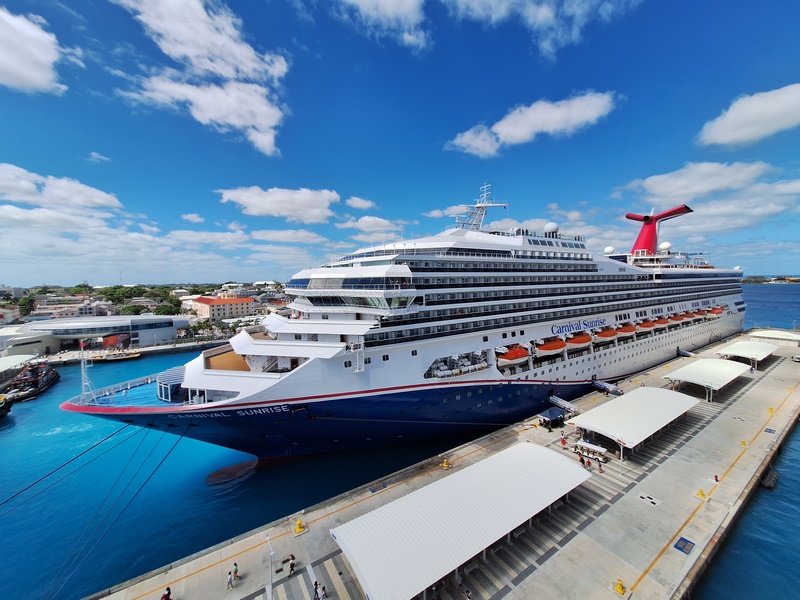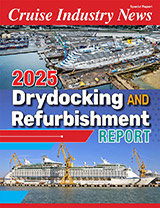Carnival Corporation is 10 percent below its all-time greenhouse gas emissions peak in 2011, despite having 30 percent more cruise capacity, said Vice Admiral Bill Burke, chief maritime officer.
The company is so confident in its new ships and efficiency efforts for its fleet that it has moved up its carbon intensity reduction goal by four years to 2026.
Big Gains
The company’s existing fleet is getting the latest version of its service power package, which is driving efficiency gains.
The package is essentially a set of upgrade options, some of which date to trials the company started in 2015.
“The biggest one is HVAC. If you look at HVAC in your home, it’s probably old and dirty. If you clean it up it will work better, but it won’t work as well as what’s on the market today. The technology is moving along,” said Burke. “Of all the things we are doing, that is the biggest piece.”
LED lights are still to be rolled out in some cases, as are variable frequency drives.
“From a corporate level, we are showing the brands what they need, specifically ship by ship. Then it’s up to the brand and procurement team to go and source items,” Burke said. “Not all of the ships have the same systems.”
Not only is the new technology important, but the installation, commission and eventual settings can be just as critical, Burke said.
“After an analysis of where a ship is today, we know where they can get to energy wise,” he explained.
Burke said he expects the service power package to evolve. Another set of HVAC upgrades will most likely follow, as he said the technology was developing.
“Other updates will largely evolve around waste heat,” he continued. “That is an area that is improving very rapidly, and we have pilot programs in place. We will see how it works and potentially roll it out to the fleet.”
New Tech
The Carnival Corp. fleet has 10 ships equipped with air lubrication systems, said Burke, as those installations inject a pocket of air under the hull while at speed.
It delivers less friction, meaning less power is needed to push the ship through the water. Six more systems are on order.
AIDA has been the test bed for two key projects: a fuel cell and batteries.
“The fuel cell works,” Burke said. “It’s really small, so it’s not particularly useful at sea. We’re looking at opportunities to do other ones, but this is technology that doesn’t seem to be moving as fast as I had hoped.”
The German brand’s test-battery installation is going pretty well, he continued.
“We see it to be successful, and I would suspect future (new) ships would have batteries, but maybe not as large as the 10 MW installation (that the AIDA ship has).”
Future Fuels
“LNG is where we are making our bed,” Burke said. “Why are we doing that? We see LNG today as 10 to 20 percent better than other fuels from an emissions perspective.”
Also helping, he said, is the fact the fuel is available as opposed to methanol.
“As we look to the future, LNG could turn into biomethane. We will be trialing that soon,” he continued.
“The same thing could happen to methanol and e-methanol in the long run, but not for another decade. It is virtually impossible to transition a ship from methanol to LNG, but going the other way is possible. You can get the benefit of LNG today and if the winner is bio-methanol in the future, you can switch to that.”
The path to net zero starts with getting more efficient today.
“We found our way to 10 percent more efficient. I believe we can get to 20 percent through efficiency measures and maybe there is more if we slow the ships down or take out ports.
“We will get benefit out of that but eventually you have to get new fuels. The lion’s share (of net zero) will come from lower carbon fuels. The studies I’ve seen show that we are a good 15 to 20 years away from e-fuels, which are the holy grail, and they may show up just in time for 2050. The nice thing about methane and e-methanol is that they are the same as LNG and methanol. They are drop-ins at that point.”
Excerpt from the Cruise Industry News Quarterly Magazine Fall 2024




